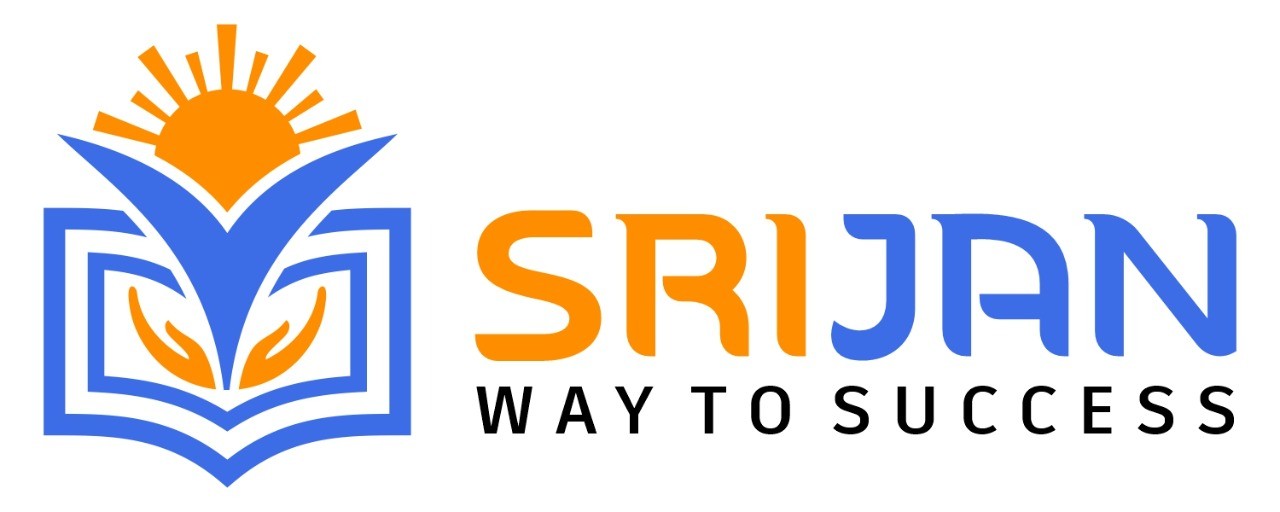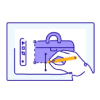SAP MDM Online: Build Stronger Data Foundations with SAP
SAP MDM Training || SAP MDM certification Training || SAP MDM Online training || SAP MDM self-paced training || SAP MDM Instructor-Led training
Key Features of Training:
- 30 Hrs Instructor-led Training
- Mock Interview Session
- Project Work & Exercises
- Flexible Schedule
- 24 x 7 Lifetime Support & Access
- Certification and Job Assistance
SAP MDM(Master Data Management):
SAP Master Data Management (MDM) is a software solution offered by SAP SE that enables organizations to manage their master data across the enterprise. Master data refers to the critical business data that is shared across multiple business processes and systems within an organization, such as customer data, vendor data, product data, and financial data. SAP MDM provides a central repository for managing and maintaining master data, which helps organizations to improve data quality, increase operational efficiency, and reduce costs. It also helps to ensure that master data is consistent, accurate, and up-to-date across all systems and processes.
Prerequisites: Who can attend SAP MDM Training?
- Basic understanding of SAP ERP and SAP NetWeaver concepts
- Knowledge of data modeling and data integration concepts
- Familiarity with XML, XSD, and XSLT
- Understanding of database concepts and SQL
- Experience with SAP applications such as SAP CRM, SAP SRM, or SAP BI may be helpful, but not always necessary
- Good Communication Skills
Responsibilities of SAP MDM Consultant:
- Analyzing business requirements for master data management
- Designing and developing master data models and structures
- Configuring and customizing SAP MDM software
- Mapping and integrating master data from various sources
- Providing guidance and support to end-users
Course Benefits:
- Job opportunities
- Promotion opportunities (Salary Hike)
- Increased productivity
- Improved decision-making
- Gain in-demand skills
What is the future of SAP MDM Consultant?
- Increased demand for master data management
- Advancements in technology
- Shift towards cloud-based solutions
- Importance of data quality and governance
- Business acumen and communication skills
The fee for SAP MDM(Master Data Management) training can vary depending on several factors such as the location, duration of the course, training format, and level of expertise. SAP offers various training options for MDM, including instructor-led courses, e-learning courses, and virtual live classrooms.
For More details you can Register
SAP MDM(Master Data Management) Certification FAQ's:
1. What is SAP MDM certification?
A: SAP MDM certification is a professional certification program offered by SAP that validates the knowledge and skills of individuals in SAP Master Data Management. It demonstrates that the individual has a solid understanding of the SAP MDM solution and can effectively manage and maintain master data.
2. What are the prerequisites for SAP MDM certification?
A: To be eligible for SAP MDM certification, candidates must have a minimum of two years of experience in SAP MDM or a related field. They must also have completed formal training in SAP MDM and passed the certification exam.
3. How do I prepare for SAP MDM certification?
A: To prepare for SAP MDM certification, candidates should take formal training in SAP MDM, review the exam syllabus, and practice using SAP MDM software. SAP also provides certification preparation guides and practice exams to help candidates prepare for the certification exam.
4. What is the format of the SAP MDM certification exam?
A: The SAP MDM certification exam is a computer-based test that consists of multiple-choice questions. The exam is typically 180 minutes long, and candidates must score at least 65% to pass.
5. Where can I take the SAP MDM certification exam?
A: The SAP MDM certification exam can be taken at authorized SAP training centers or testing centers. Candidates can register for the exam online or through their local SAP training center.
6. What are the benefits of SAP MDM certification?
A: SAP MDM certification can enhance an individual's career prospects by demonstrating their expertise in SAP MDM. It can also help organizations identify qualified professionals for their SAP MDM projects and initiatives.
7. How long is SAP MDM certification valid?
A: SAP MDM certification is valid for two years. Candidates must re-certify every two years to maintain their certification status.
8. What are the different levels of SAP MDM certification?
A: SAP MDM certification is currently available at the Associate level. There are no higher-level certifications available for SAP MDM at this time.
9. How much does SAP MDM certification cost?
A: The cost of SAP MDM certification varies by country and region. Candidates should check with their local SAP training center or exam provider for pricing information.
10. Can I take the SAP MDM certification exam online?
A: Currently, the SAP MDM certification exam is only available at authorized SAP training centers or testing centers. However, SAP does offer online certification exams for some other SAP products.
SAP MDM(Master Data Management) Certification:
SAP offers certification in Master Data Management (MDM), which is a professional certification program that validates the knowledge and skills of individuals in SAP Master Data Management. The certification exam assesses an individual's understanding of the SAP MDM solution, including data modeling, data governance, data quality management, and data distribution.
To be eligible for SAP MDM certification, candidates must have at least two years of experience in SAP MDM or a related field. They must also have completed formal training in SAP MDM and passed the certification exam.
The SAP MDM certification exam is a computer-based test that consists of multiple-choice questions. The exam is typically 180 minutes long, and candidates must score at least 65% to pass. SAP provides certification preparation guides and practice exams to help candidates prepare for the certification exam.
SAP MDM(Master Data Management) Curriculum:
1. Introduction to Master Data Management
- What is master data?
- Importance of master data management
- Key concepts and principles of MDM
2. SAP MDM Overview
- Introduction to SAP MDM
- Architecture and components
- SAP MDM deployment options
3. SAP MDM Data Modeling
- Data modeling concepts and techniques
- Creating and managing data models in SAP MDM
- Best practices for data modeling
4. SAP MDM Data Governance
- Overview of data governance
- Data quality management in SAP MDM
- Data security and privacy in SAP MDM
5. SAP MDM Data Integration
- Overview of data integration
- Integration with SAP and non-SAP systems
- SAP MDM integration with SAP ERP, SAP BW, and other systems
6. SAP MDM Data Syndication
- Overview of data syndication
- SAP MDM data syndication architecture
- Best practices for data syndication
7. SAP MDM Workflow and Business Rules
- Workflow concepts and techniques
- SAP MDM workflow capabilities
- Business rules in SAP MDM
8. SAP MDM Best Practices and Implementation
- Best practices for SAP MDM implementation
- Key success factors for SAP MDM projects
- SAP MDM project management methodologies
9. SAP MDM Future Trends
- Emerging trends in SAP MDM
- Future of SAP MDM
- Latest developments in SAP MDM
SAP MDM(Master Data Management) Interview Questions & Answers:
1. What is Master Data Management (MDM)?
A: MDM is the process of identifying, consolidating, cleansing, and maintaining the critical data that is used across an organization to support business operations, decision-making, and analysis.
2. What are the key benefits of implementing MDM in an organization?
A: MDM can help an organization to achieve a single, trusted view of critical business data, which can improve decision-making, enhance operational efficiency, support compliance efforts, and enable better customer engagement.
3. What are some common challenges that organizations face when implementing MDM?
A: Common challenges include data quality issues, data integration challenges, organizational resistance to change, lack of executive sponsorship, and the complexity of integrating multiple systems and data sources.
4. Can you explain the difference between master data and transactional data?
A: Master data refers to the critical data elements that are used across an organization to support business operations, decision-making, and analysis, such as customer, product, and supplier data. Transactional data, on the other hand, refers to the data that is generated by business transactions, such as sales orders, invoices, and purchase orders.
5. What is data profiling, and why is it important in MDM?
A: Data profiling is the process of analyzing and assessing the quality of data in order to identify inconsistencies, inaccuracies, and anomalies. This is important in MDM because it can help to identify data quality issues and develop strategies for improving data quality.
6. What are some common techniques for data cleansing in MDM?
A: Techniques for data cleansing in MDM include removing duplicates, standardizing data formats, validating data against business rules, and enriching data with additional information.
7. Can you describe the role of data governance in MDM?
A: Data governance involves the development of policies and procedures for managing and maintaining data quality, consistency, and accuracy across an organization. In MDM, data governance is critical for ensuring that the master data is consistent and accurate across all systems and applications.
8. What are some common integration challenges that arise when implementing MDM?
A: Integration challenges can include issues with data mapping, data transformation, data synchronization, and data quality. It's important to develop a robust integration strategy and to ensure that all data sources are properly integrated with the MDM system.
9. What is your experience with MDM software and tools?
A: Depending on your experience, you may discuss your knowledge of specific MDM software and tools such as SAP Master Data Governance, Informatica MDM, IBM InfoSphere MDM, Talend MDM, and Oracle MDM.
10. How do you stay up-to-date with the latest developments and trends in MDM?
A: You may discuss your approach to staying up-to-date, such as reading industry publications, attending conferences and webinars, participating in online communities, and networking with other professionals in the field.
11. Can you explain the concept of data stewardship in MDM?
A: Data stewardship involves assigning responsibility for managing specific data elements to individuals or teams within an organization. In MDM, data stewardship is important for ensuring that the master data is properly maintained and that any issues are addressed in a timely manner.
12. What is the role of metadata in MDM?
A: Metadata is information about data that describes its characteristics, such as its source, format, and meaning. In MDM, metadata is important for understanding the relationships between different data elements and for ensuring that the master data is properly documented and maintained.
13. How do you ensure that data security and privacy are maintained in an MDM system?
A: Security and privacy considerations should be built into the MDM system from the outset, including the implementation of access controls, encryption, and other measures to protect sensitive data. It's also important to ensure that the system complies with relevant regulatory requirements, such as GDPR or CCPA.
14. Can you describe a successful MDM implementation that you have been a part of?
A: Be prepared to describe a specific MDM implementation that you have worked on, including the goals of the project, the challenges that were encountered, and the strategies that were used to overcome those challenges. Be sure to highlight any measurable benefits that were achieved as a result of the implementation.
15. How do you ensure that the master data is consistent across different systems and applications?
A: Achieving consistency requires a combination of data integration, data quality, and data governance strategies. This may include implementing data validation rules, developing a common data model, and establishing policies and procedures for managing data updates and changes.
16. How do you measure the success of an MDM implementation?
A: Measuring success can involve a variety of metrics, depending on the goals of the implementation. Common metrics might include improvements in data quality, reductions in data duplication, faster access to critical data, and improved decision-making capabilities.
17. Can you discuss your experience with data modeling and data architecture?
A: Depending on your experience, you may describe your knowledge of data modeling techniques such as entity-relationship diagrams, data flow diagrams, and UML. You may also discuss your experience with data architecture, including the design of data warehouses, data marts, and data lakes.
18. How do you handle data conflicts in an MDM system?
A: Data conflicts can arise when multiple systems or applications have different versions of the same data. Resolving conflicts requires a clear understanding of the business rules for managing data updates and changes, as well as the implementation of data governance policies to ensure that conflicting data is properly addressed.
19. How do you ensure that the MDM system is scalable and can accommodate future growth?
A: Scalability considerations should be built into the MDM system from the outset, including the use of scalable infrastructure, the implementation of data partitioning strategies, and the development of a roadmap for future growth and expansion.
20. Can you describe your experience with MDM implementation methodologies such as agile or waterfall?
A: Depending on your experience, you may discuss your knowledge of different implementation methodologies, including their benefits and drawbacks. You may also describe your experience with project management tools and techniques for tracking project progress and ensuring timely delivery.
21. Can you explain the concept of a data domain in MDM?
A: A data domain is a category of master data that is used to organize and manage data elements according to their type or purpose. Common data domains include customer data, product data, and employee data.
22. How do you ensure that the MDM system is integrated with other systems and applications in the organization?
A: Integration with other systems and applications is critical for ensuring that the master data is accurate and up-to-date. This may involve implementing data integration tools such as ETL (extract, transform, load), APIs (application programming interfaces), or web services.
23. Can you describe your experience with data profiling and data quality assessment?
A: Depending on your experience, you may describe your knowledge of data profiling techniques, such as statistical analysis or data visualization, and how they can be used to identify data quality issues. You may also discuss your experience with data quality assessment tools and methodologies, such as scorecards or data quality dashboards.
24. How do you ensure that the MDM system complies with relevant industry standards and regulations?
A: Compliance with industry standards and regulations requires a thorough understanding of the specific requirements and the implementation of appropriate policies and procedures. This may involve working closely with legal or compliance teams to ensure that the MDM system meets all relevant requirements.
25. Can you describe your experience with data governance?
A: Depending on your experience, you may describe your knowledge of data governance frameworks and methodologies, such as the DAMA Data Management Body of Knowledge (DMBOK). You may also discuss your experience with developing data governance policies and procedures, and how they can be used to ensure the quality and consistency of master data.
26. How do you ensure that the MDM system is flexible enough to accommodate changes in business requirements?
A: Flexibility requires a combination of technical and organizational strategies. This may involve implementing a modular architecture that can be easily modified or updated, as well as developing a culture of continuous improvement that values feedback and innovation.
27. Can you describe your experience with data migration and data conversion?
A: Depending on your experience, you may describe your knowledge of data migration and conversion techniques, such as ETL processes or data mapping. You may also discuss your experience with data cleansing or data normalization techniques that are often used during migration or conversion processes.
28. How do you ensure that the MDM system is user-friendly and meets the needs of business users?
A: User-friendliness requires a deep understanding of the needs and preferences of business users, as well as a commitment to designing interfaces and workflows that are intuitive and easy to use. This may involve conducting user research or usability testing to gather feedback and identify areas for improvement.
29. Can you describe your experience with data lineage and data traceability?
A: Depending on your experience, you may describe your knowledge of data lineage and traceability techniques, such as metadata management or data lineage mapping. You may also discuss your experience with data governance policies that require the tracking of data lineage and traceability to ensure data quality and compliance.
30. How do you ensure that the MDM system is reliable and available 24/7?
A: Reliability and availability require a combination of technical and organizational strategies. This may involve implementing high availability architecture, disaster recovery plans, and monitoring and alerting systems to detect and respond to system failures in a timely manner. It may also involve establishing a culture of accountability and ownership that prioritizes the reliability and availability of critical systems.
Participants will have 24/7 access to our online lab, providing hands-on experience with SAP MDM tools and scenarios.
This includes server access to S/4 HANA 2023 for 1 year, ensuring you have ample time to practice and apply your skills in a real-world environment.
With this extended access, you can work on projects, explore advanced features, and solidify your understanding of SAP MDM in the latest SAP S/4 HANA version.















